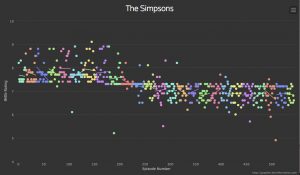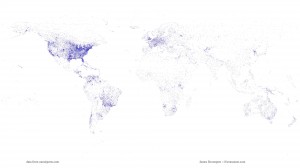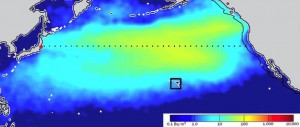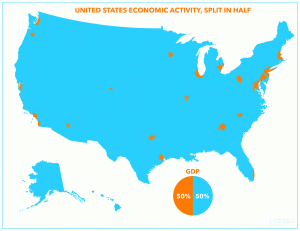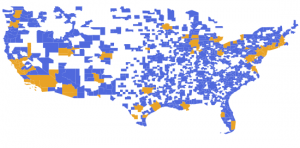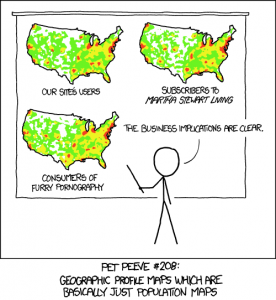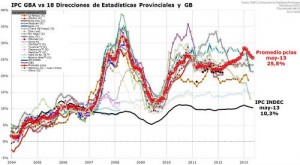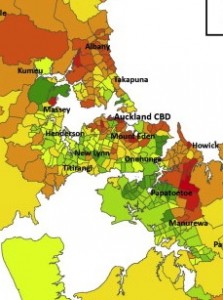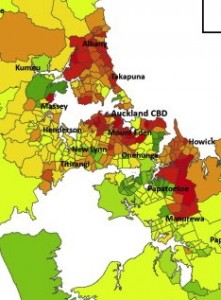On a scale of 1 to 10
Via @neil_, an interactive graph of ratings for episodes of The Simpsons
This comes from graphtv, which lets you do this for all sorts of shows (eg, Breaking Bad, which strikingly gets better ratings as the season progresses, then resets)
The reason the Simpsons graph has extra relevance to StatsChat is the distinctive horizontal line. For the first ten seasons an episode basically couldn’t get rated below 7.5, after that it basically couldn’t rated above 7.5. In the beginning there were ‘typical’ episodes and ‘good’ episodes; now there are ‘typical’ episodes and ‘bad’ episodes.
This could be a real change in quality, but it doesn’t match up neatly with the changes in personnel and style. It could be a change in the people giving the ratings, or in the interpretation of the scale over time. How could we tell? One clue is that (based on checking just a handful of points) in the early years the high-rating episodes were rated by more people, and this difference has vanished or even reversed.
